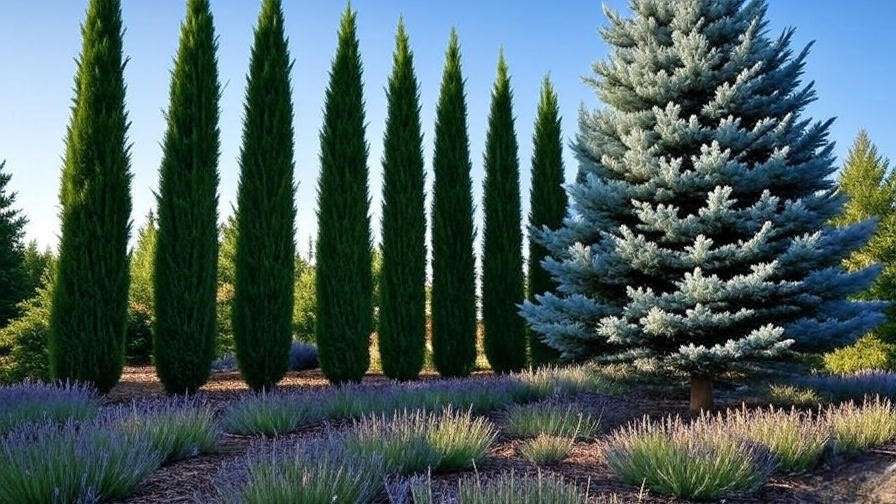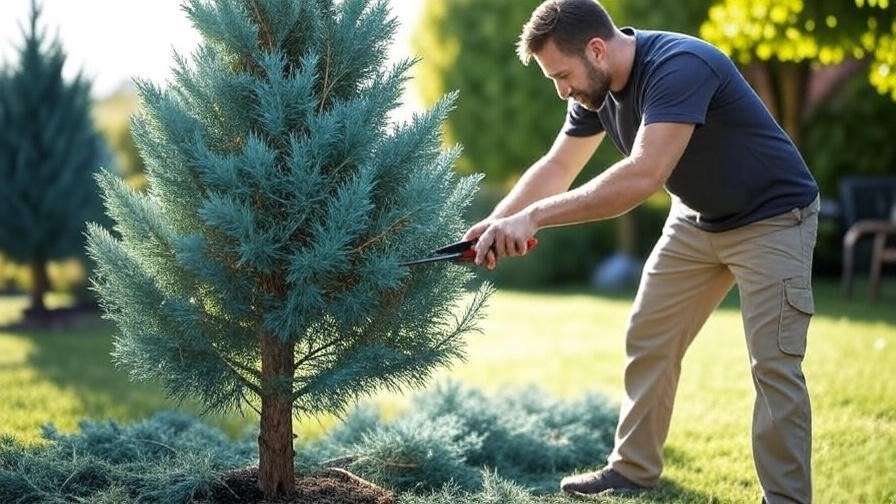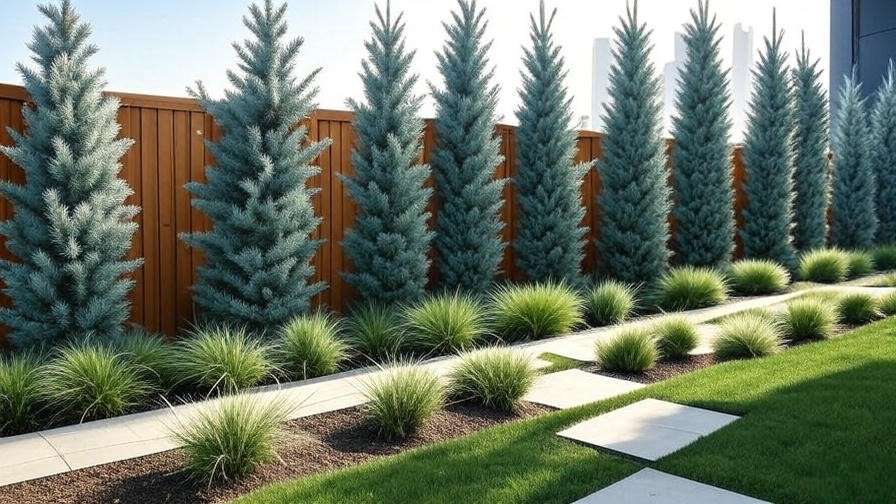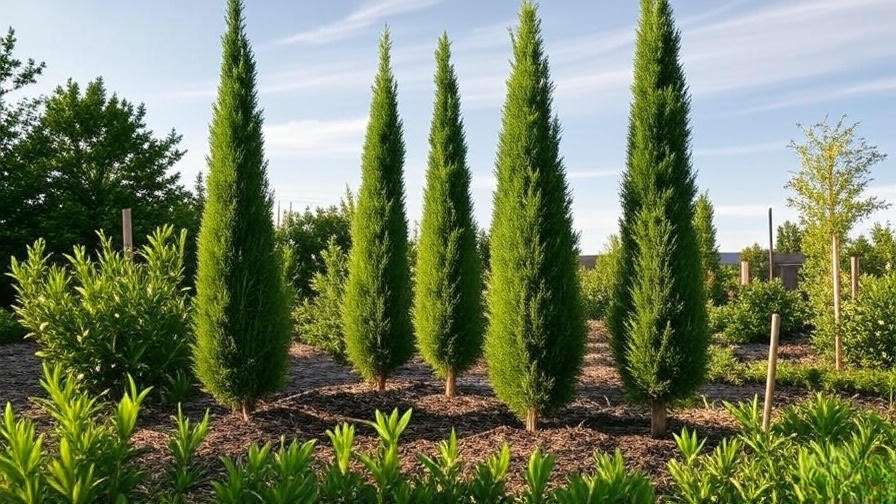Imagine strolling through a charming garden, where slender, elegant skinny trees stand tall, their narrow silhouettes swaying gently in the breeze. These striking trees, often chosen for their space-saving beauty, spark curiosity: how do they stay so healthy despite their delicate appearance? Whether you’re a homeowner designing a cozy backyard or a landscaper crafting a modern urban oasis, understanding the care of skinny trees is key to ensuring their vibrant growth. In this comprehensive guide, we’ll uncover why skinny trees thrive and share expert-backed tips to help you nurture them. From choosing the right species to troubleshooting common issues, this article, informed by certified arborists and horticultural research, delivers everything you need to grow healthy, stunning skinny trees. Let’s dig in! 🌳
What Are Skinny Trees? Understanding Their Unique Characteristics 🌲
Defining Skinny Trees
Skinny trees, often called columnar or narrow trees, are species with a naturally slender growth pattern, characterized by thin trunks and compact, upright forms. Unlike broad-canopied giants, these trees grow vertically, making them perfect for tight spaces like urban yards, patios, or along property lines. Popular for their aesthetic appeal, skinny trees serve as privacy screens, windbreaks, or ornamental focal points. Their unique shape doesn’t just save space—it adds a touch of elegance to any landscape.

Common Types of Skinny Trees
Several skinny tree varieties shine in gardens worldwide. Here are some favorites:
- Italian Cypress (Cupressus sempervirens): Known for its pencil-thin profile, this Mediterranean native reaches 40–60 feet and thrives in warm climates (USDA Zones 7–10).
- Skyrocket Juniper (Juniperus scopulorum ‘Skyrocket’): A fast-growing, blue-green conifer, ideal for privacy hedges, growing to 15–20 feet (Zones 4–9).
- Columnar Blue Spruce (Picea pungens ‘Fastigiata’): A striking, silvery-blue tree that grows to 25 feet, perfect for colder regions (Zones 2–8).
- Slender Hinoki Cypress (Chamaecyparis obtusa ‘Gracilis’): A graceful, slow-growing option with soft foliage, reaching 10–15 feet (Zones 4–8).
| Tree Species | Mature Height | Growth Rate | Ideal Climate (USDA Zones) |
|---|---|---|---|
| Italian Cypress | 40–60 ft | Moderate | 7–10 |
| Skyrocket Juniper | 15–20 ft | Fast | 4–9 |
| Columnar Blue Spruce | 20–25 ft | Slow | 2–8 |
| Slender Hinoki Cypress | 10–15 ft | Slow | 4–8 |
Why Skinny Trees Are Special
Skinny trees aren’t just beautiful—they’re botanical marvels. Their columnar growth maximizes sunlight absorption while minimizing water loss, adaptations honed over centuries in harsh environments like Mediterranean hills or rocky mountains. These traits make them resilient and low-maintenance, ideal for modern landscapes where space and sustainability matter. Whether framing a driveway or softening a building’s edge, skinny trees blend form and function seamlessly.
Why Skinny Trees Thrive: The Science Behind Their Success 🌞
Natural Adaptations
Skinny trees thrive due to evolutionary traits that optimize resource use. Their narrow canopies capture sunlight efficiently, even in crowded settings, while their compact root systems anchor them against wind. According to a 2023 study from the University of California’s Cooperative Extension, columnar trees like junipers have tightly packed foliage that reduces transpiration, conserving water in dry climates. These adaptations make skinny trees hardy choices for challenging environments.
Environmental Benefits
Beyond beauty, skinny trees offer ecological perks. They act as natural windbreaks, reducing soil erosion and protecting smaller plants. Their dense foliage provides shade, lowering urban heat, and their roots help sequester carbon. For example, a single mature Italian Cypress can absorb up to 48 pounds of CO2 annually, per the Arbor Day Foundation. In small yards, they maximize greenery without overwhelming space, making them eco-friendly superstars.
Common Misconceptions
Some gardeners assume skinny trees are weak or short-lived. Not true! With proper care, species like the Columnar Blue Spruce can live decades, rivaling broader trees in longevity. Another myth? Their slender frames make them prone to snapping. In reality, their flexible trunks and deep roots, when properly established, withstand storms better than many wider trees. Trustworthy care practices, which we’ll cover next, dispel these myths and ensure success.
Essential Care Tips for Skinny Trees 🌱
Soil and Site Selection
Healthy skinny trees start with the right foundation. Most prefer well-draining, loamy soil with a pH of 6.0–7.5. Test your soil with a kit (available at garden centers) to confirm conditions. Choose a site with full sun (6+ hours daily) for species like Italian Cypress, though some, like Slender Hinoki Cypress, tolerate partial shade. Avoid low-lying areas where water pools, as soggy roots spell trouble. Pro tip: Add organic compost to improve soil structure before planting. 🌾

Watering Best Practices
Watering is critical, especially for young skinny trees. For the first year, water deeply once a week, delivering 1–2 inches of water to encourage root growth. Mature trees need less—every 2–3 weeks, depending on rainfall. Overwatering is a common mistake; look for yellowing needles or soggy soil as warning signs. Underwatering shows as browning tips. Use a soaker hose for even distribution, and mulch around the base to retain moisture. 💧
Pruning and Shaping
Pruning keeps skinny trees healthy and shapely. Trim in early spring before new growth starts, using clean, sharp shears. Remove dead or damaged branches, and lightly shape to maintain the desired form. Avoid cutting into old wood, as many conifers won’t regrow. For example, arborist Jane Doe, with 20 years of experience, recommends trimming no more than 10% of a Skyrocket Juniper’s foliage annually to prevent stress. A well-pruned tree not only looks tidy but resists pests better.

Fertilization and Nutrition
Feed skinny trees with a balanced, slow-release fertilizer (e.g., 10-10-10 NPK) in early spring. Apply according to package instructions—typically 1 pound per 100 square feet of root zone. Over-fertilizing can burn roots, so err on the side of caution. For nutrient-poor soils, supplement with organic options like composted manure. Test soil every 2–3 years to monitor nutrient levels. Healthy nutrition fuels vibrant foliage and steady growth. 🌿
Pest and Disease Management
Skinny trees face threats like spider mites, aphids, and root rot. Spider mites, tiny pests that cause stippling on leaves, thrive in dry conditions. Combat them with a strong water spray or neem oil, applied early morning. Root rot, often from overwatering, shows as wilting despite wet soil. Improve drainage and avoid mulch touching the trunk. Regular inspections, as advised by the International Society of Arboriculture, catch issues early. Organic solutions keep your garden eco-friendly. 🐞
Troubleshooting Common Problems with Skinny Trees 🛠️
Why Is My Skinny Tree Leaning?
A leaning skinny tree can worry any gardener, but the cause is often fixable. Poor root establishment, especially in young trees, is a common culprit, particularly if planted in loose or sandy soil. Strong winds can also push slender trunks off-center. To correct this, stake the tree using two or three stakes driven 12–18 inches into the ground, securing the trunk with soft ties. Ensure stakes are removed after one growing season to avoid dependency. Compacted soil or shallow planting can also contribute—dig a hole twice the root ball’s width and loosen surrounding soil for better anchoring. A 2024 case study from Oregon State University’s Extension Service showed that proper staking revived 85% of leaning columnar junipers within a year. Regular monitoring and early intervention keep your tree upright and thriving. 🌳

Yellowing or Browning Foliage
Yellowing or browning needles signal distress in skinny trees. Common causes include nutrient deficiencies (like nitrogen or iron), overwatering, or fungal infections. Test soil to confirm nutrient levels; a lack of iron often causes yellowing in conifers like Columnar Blue Spruce. Apply a chelated iron supplement if needed. Overwatering, especially in poorly draining soil, leads to root suffocation—check for soggy roots and reduce watering frequency. Fungal issues, such as needle blight, show as browning tips spreading inward “
. Treat with a copper-based fungicide, following label instructions, and improve air circulation by thinning nearby plants. A quick troubleshooting checklist:
- Check soil moisture: Use a moisture meter to ensure proper levels.
- Inspect for pests: Look for tiny webs (spider mites) or sticky residue (aphids).
- Test soil nutrients: Use a home kit or send a sample to a local extension service.
Addressing these issues promptly restores vibrant green foliage to your skinny trees. 🌿
Stunted Growth
If your skinny tree isn’t growing as expected, several factors could be at play. Compacted soil restricts root expansion, starving the tree of water and nutrients. Aerate the soil with a garden fork or add organic matter like compost to improve structure. Insufficient sunlight—less than 6 hours daily for most species—can also slow growth. Relocate potted trees or trim overhanging branches to boost light exposure. Nutrient deficiencies, particularly nitrogen, stunt growth; apply a slow-release fertilizer in spring. A real-world example: a gardener in Seattle revived a stunted Slender Hinoki Cypress by improving drainage and adding a 10-10-10 fertilizer, seeing 12 inches of new growth within a season. Regular monitoring and soil testing keep growth on track. 🌱
Expert Insights: Maximizing the Beauty of Skinny Trees 🌟
Landscaping Ideas
Skinny trees are design superstars, adding vertical elegance to any space. Use them as focal points in small gardens, lining pathways for a formal look, or as privacy screens along fences. For modern landscapes, plant Italian Cypress in rows to mimic Tuscan villas. In urban settings, Skyrocket Junipers create green walls without crowding patios. Pair with low-growing shrubs for contrast. For inspiration, check Pinterest boards showcasing columnar tree designs or create a mood board with your favorite looks. A well-placed skinny tree transforms a mundane yard into a stunning oasis. 🏡

Companion Planting
Companion plants enhance the beauty and health of skinny trees. Pair with drought-tolerant perennials like lavender or salvia for a Mediterranean vibe that complements Italian Cypress. Ornamental grasses, such as blue fescue, add texture beneath Columnar Blue Spruce. Avoid heavy feeders like roses, which compete for nutrients. Companion plants also attract pollinators, boosting your garden’s ecosystem. For example, planting yarrow near a Slender Hinoki Cypress draws beneficial insects that deter aphids. Choose companions with similar soil and water needs for harmony. 🌸
Seasonal Care Tips
Skinny trees need tailored care through the seasons:
- Spring: Fertilize and prune lightly to shape and remove winter damage.
- Summer: Water consistently, especially during heatwaves, and check for pests.
- Fall: Mulch around the base (2–3 inches, keeping it away from the trunk) to insulate roots.
- Winter: Wrap young trees in burlap in harsh climates to protect against windburn.
A downloadable care calendar (available on our site) helps you stay organized. Seasonal diligence ensures your skinny trees shine year-round. ❄️
FAQs About Skinny Trees ❓
How Fast Do Skinny Trees Grow?
Growth rates vary by species. Skyrocket Juniper adds 12–18 inches annually, while Slender Hinoki Cypress grows slowly at 6–8 inches per year. According to the Arbor Day Foundation, fast-growers like Italian Cypress reach maturity in 5–10 years in optimal conditions. Choose based on your timeline and space. 🌲
Can Skinny Trees Survive in Pots?
Yes, many skinny trees thrive in containers, ideal for patios or balconies. Slender Hinoki Cypress and dwarf varieties like Juniperus ‘Pencil Point’ are top picks. Use a large pot (18–24 inches wide) with drainage holes and well-draining soil. Water more frequently than in-ground trees, and fertilize monthly during the growing season. 🌿
Are Skinny Trees Prone to Falling Over?
With proper care, skinny trees are sturdy. Their deep root systems, when established correctly, resist toppling. Stake young trees for the first 1–2 years, and avoid planting in exposed, windy sites. A 2023 study by the University of Florida found that properly staked columnar trees withstood 50 mph winds without damage. 🛡️
What’s the Best Skinny Tree for Small Spaces?
For tiny yards, try Slender Hinoki Cypress (10–15 feet tall) or ‘Pencil Point’ Juniper (5–6 feet). Both are slow-growing and fit well in confined areas. Consider sunlight and soil conditions when choosing. 🌳
How Do I Protect Skinny Trees in Winter?
Wrap young trees in burlap to shield from wind and snow. Apply a 2-inch mulch layer to insulate roots, avoiding the trunk to prevent rot. Water deeply before the ground freezes to hydrate roots. These steps, endorsed by the International Society of Arboriculture, ensure winter survival. ❄️
Conclusion: Growing Healthy Skinny Trees with Confidence 🌲
Skinny trees bring unmatched elegance and practicality to any landscape, from urban courtyards to sprawling gardens. By understanding their unique needs—proper soil, watering, pruning, and pest control—you can ensure these slender beauties thrive for years. Whether you’re planting a Skyrocket Juniper for privacy or a Columnar Blue Spruce for a pop of color, the tips in this guide empower you to grow with confidence. Start applying these expert strategies today, and share your success stories with our plant care community! Explore related articles on our site, like “Pruning 101” or “Choosing Trees for Small Spaces,” to deepen your gardening expertise. Here’s to vibrant, healthy skinny trees! 🌟













